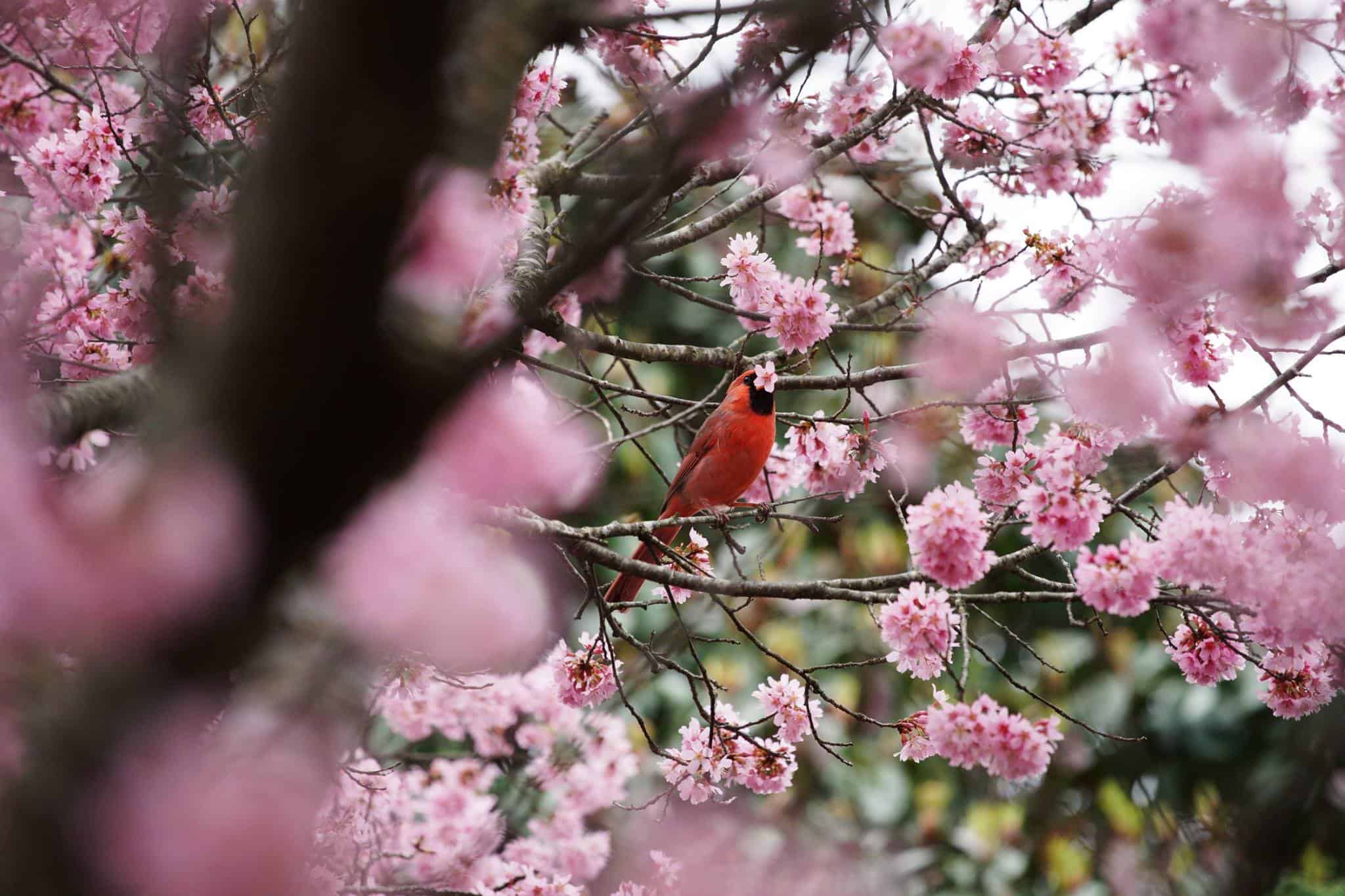There are a select few plants that will attract northern cardinals to your yard fast! But not all types of plants will get their attention so before you willy-nilly start plugging things into the ground, learn which trees, shrubs, flowers, and vines are the cardinal’s favorite and why!
21 Plants to Attract Cardinals:
- Oak Trees
- Crabapple Tres
- Hackberry Trees
- Hawthorn Trees
- Pine Trees
- Cherry Trees
- Mulberry Trees
- Tulip Trees
- Serviceberry Bushes
- American Holly
- Dogwood
- American Beautyberry
- Rambling Rose
- Elderberry Bushes
- Blackberry Bushes
- Sumac Bushes
- Sunflowers
- Purple Coneflowers
- Verbena Flowers
- Wild Grape Vines
- Virginia Creeper Vines
Grab your gardening gloves and let’s learn more about these plants and why they’re so important to cardinals.
Why do cardinals need trees, shrubs & flowers?
Cardinals need more than just a good view of the world to survive and thrive – they also need food, shelter & protection, nesting sites, and access to water.
Fortunately, trees, shrubs, vines, and flowers meet almost all of these essential needs.
- Trees provide shelter from predators while also providing a variety of food sources such as berries, nuts, seeds, and insects. They also offer ideal perching spots.
- Shrubs provide protection from the elements while also offering a place to nest and roost. Many shrubs also produce berries – even through winter when food is scarce.
- Vines are used for nesting sites as well as providing food sources such as fruit and budding blossoms.
- Flowers offer both foods through the production of seeds and emerging flower buds.
By creating an inviting habitat with a variety of plants, you can be sure that northern cardinals will come flocking to your backyard for years to come!
What about a water source?
All wild birds also need a source of fresh water, cardinals included. While plants don’t offer hydration directly, you can make your yard especially attractive by setting out a birdbath and refreshing the water regularly.
Trees: Ideal Plants to Attract Cardinals
Trees are a cardinal’s best friend! Not only do they offer shelter and protection, but they also provide a variety of food sources such as berries, nuts, seeds, and insects. Plus, trees make the perfect perching spot for cardinals to survey their surroundings.
When it comes to attracting cardinals to your yard, here are several trees you should consider planting.
1. Oak Trees
(Quercus ba) / Zones 7-10
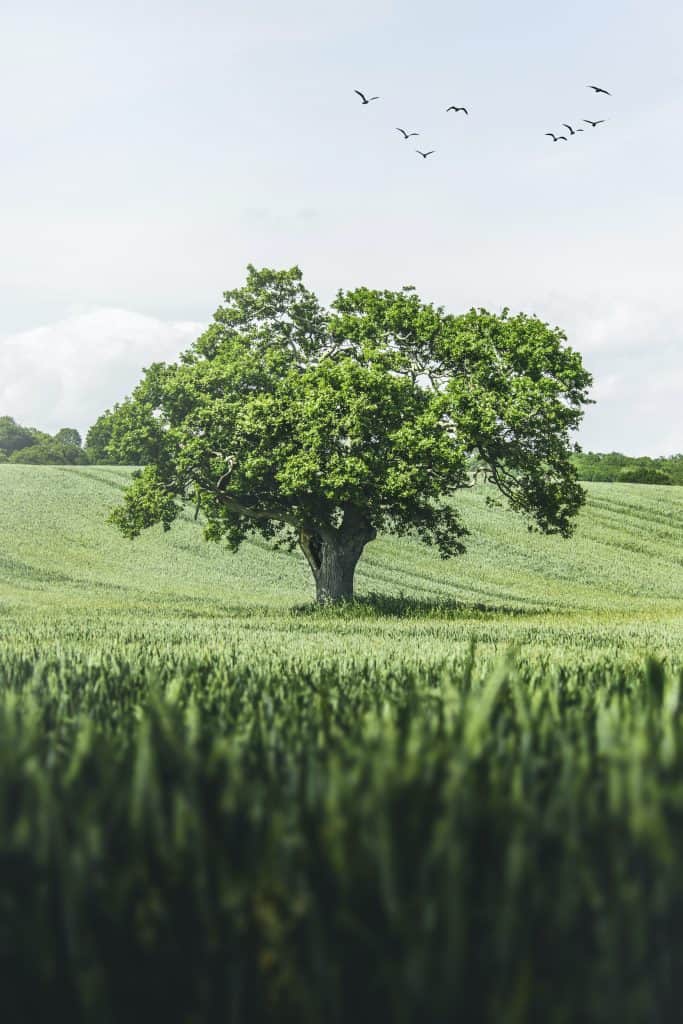
The mighty oak tree is a favorite of cardinals and many other wild birds. Not only does it provide a variety of food sources such as nuts, acorns, and insects, but its dense foliage also provides refuge from the elements.
Cardinals love to perch on oak branches for long periods of time, taking in their surroundings and searching for food.
Oaks are slow-growers so if this hardwood appeals to you, start digging now!
2. Crabapple Trees
(Malus spp.) / Zones 4-8
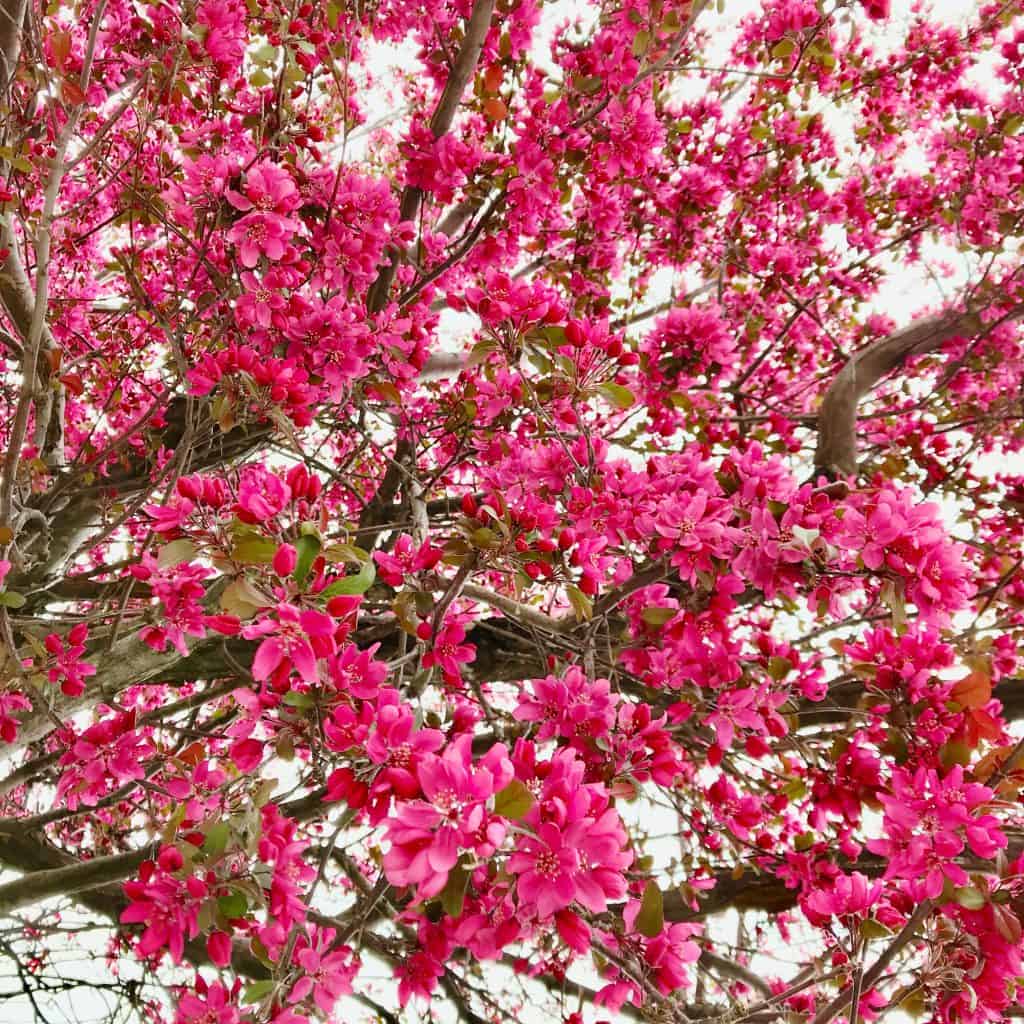
Crabapple trees provide important food and shelter, but they also add a beautiful aesthetic to your yard.
Bonus! Crabapple trees also provide a plethora of gorgeous and fragrant blossoms in the spring. In the winter, the attractive branches and bark provide a splash of color in an otherwise gray season.
This tree is also low maintenance — requiring minimal pruning.
3. Hackberry Trees
(Celtis occidentalis) / Zones 2-9
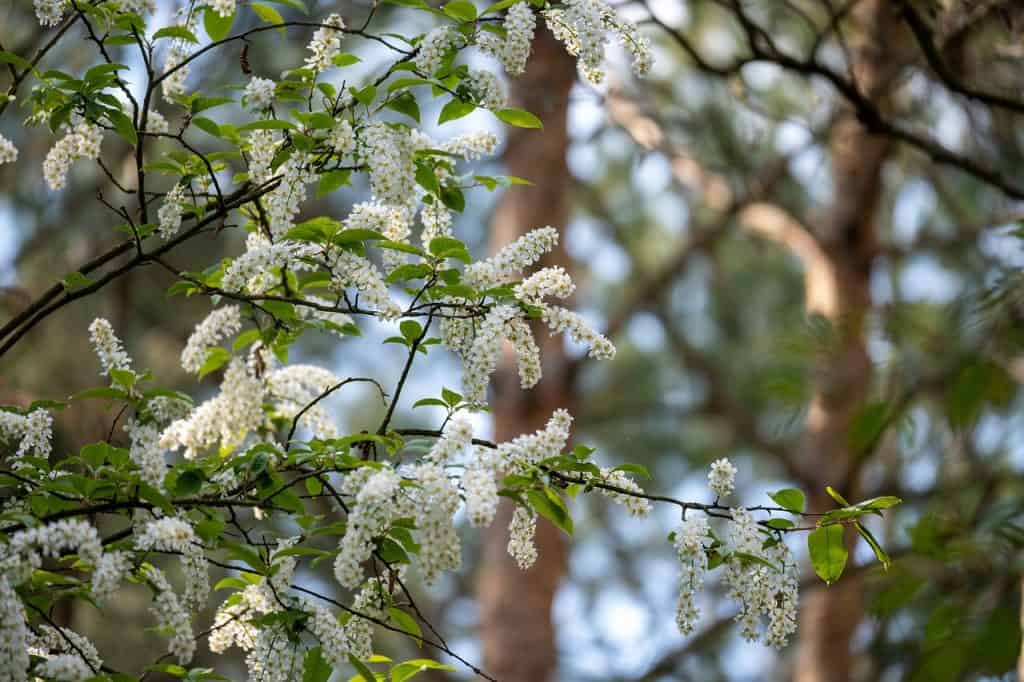
The hackberry tree is also native to North America. It can reach heights up to 60 feet providing an ideal perching destination. In the spring, when cardinal couples are pairing up, they’ll appreciate a tall spot from which to sing to one another.
Cardinals love this tree for the small, reddish-purple fruits ready in late summer and early fall. You’ll love the hackberry tree for its visual appeal. It’s a win-win!
4. Hawthorn Trees
(Crataegus spp.) / Zones 3-9
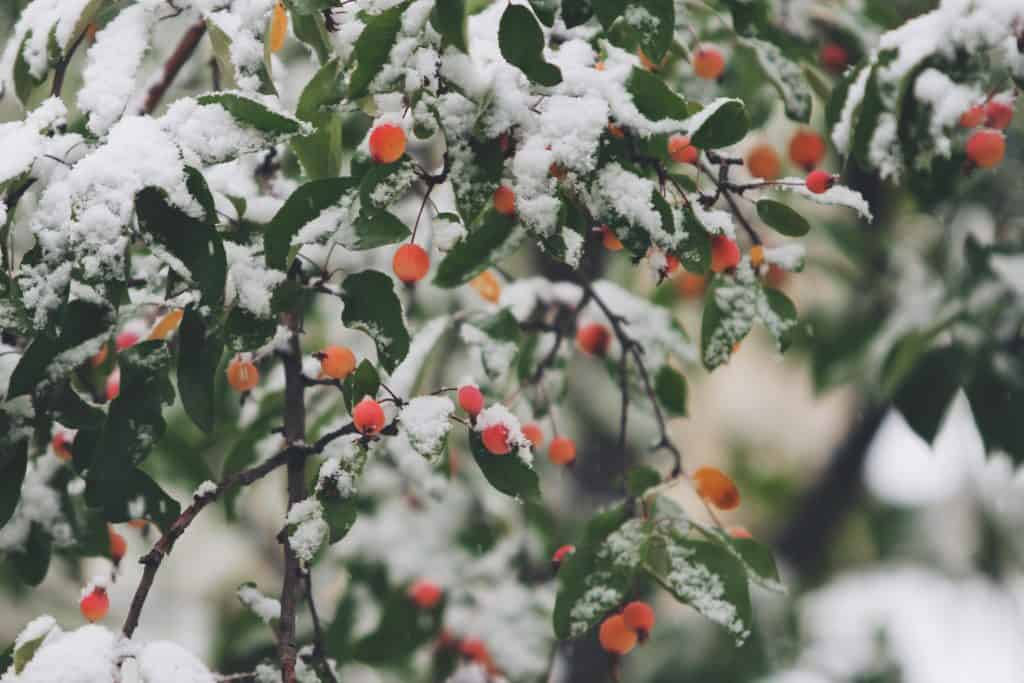
Hawthorns are dense, bushy trees that provide plenty of cover and protection from predators. They’re seed-bearing plants and also produce berries. The two are key food items that cardinals love.
By strategically placing a few hawthorn trees throughout your yard, you can increase your chances of seeing these stunning birds up close.
Hawthorns are hardy trees that are easy to care for and will give you years of enjoyment. Sit back and relax as cardinals dash around between the branches in search of food.
5. Pine Trees
(Pinus spp.) / Zones 2-8
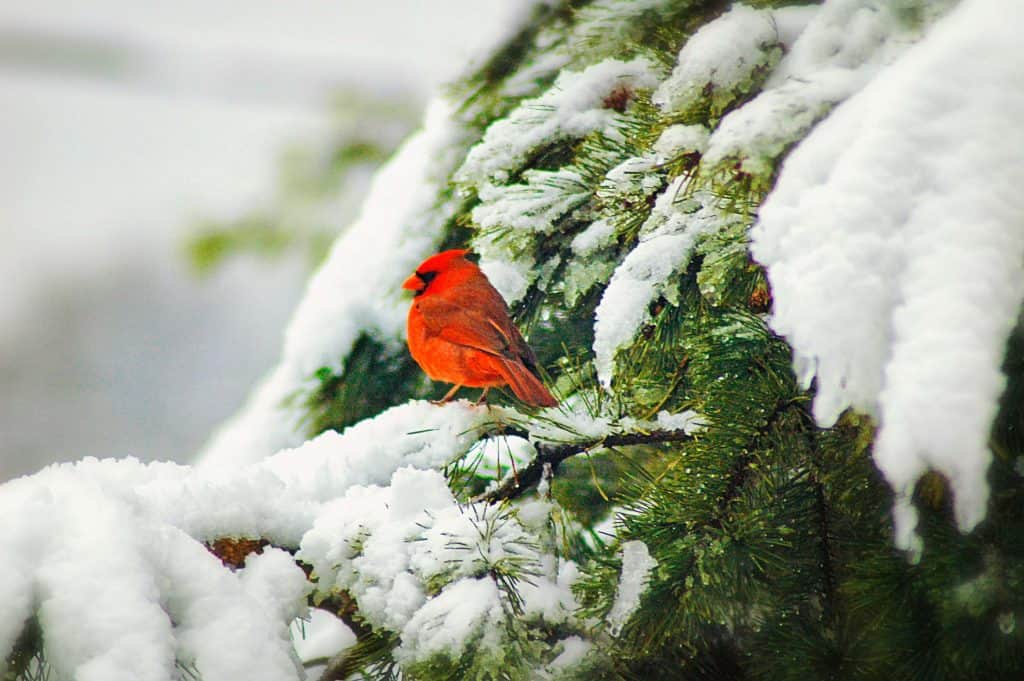
Pine trees provide the perfect spot for cardinals to perch, but they also offer excellent shelter from predators with their dense foliage. This tree is known to be quite drought-resistant – another plus!
6. Cherry Trees
(Prunus spp) / Zones 4-8
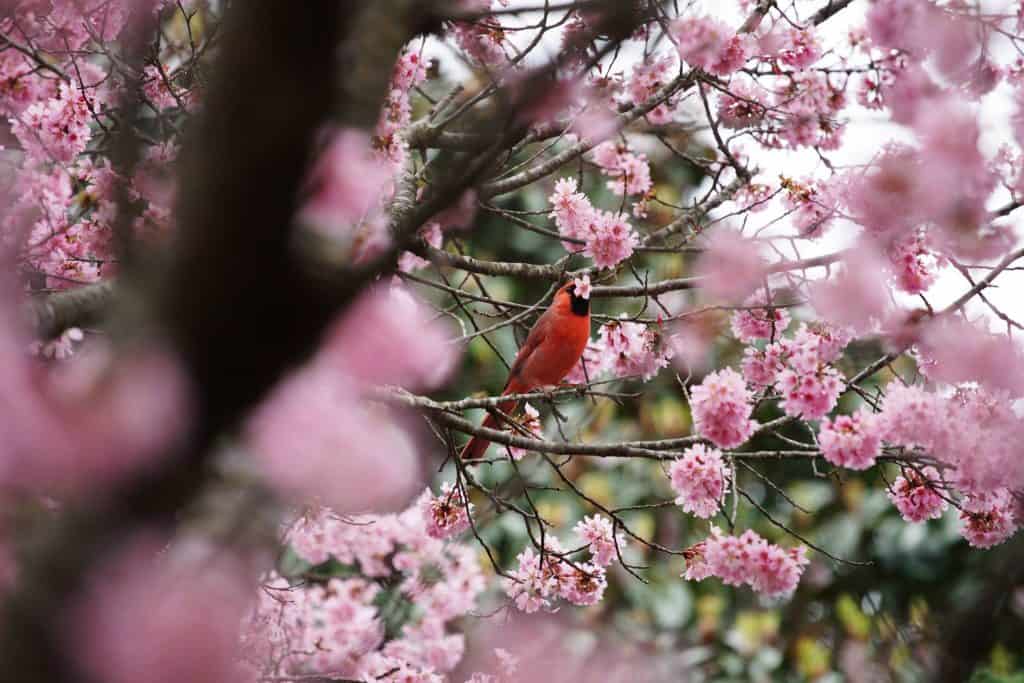
Cherry trees are an excellent choice for any backyard looking to attract northern cardinals.
These trees offer an abundance of fruits (hence the name “cherry” tree) as well as an ideal perching spot for the birds.
Cherry trees are also hardy trees and low maintenance!
7. Mulberry Trees
(Morus spp) / Zones 4-5 and 8
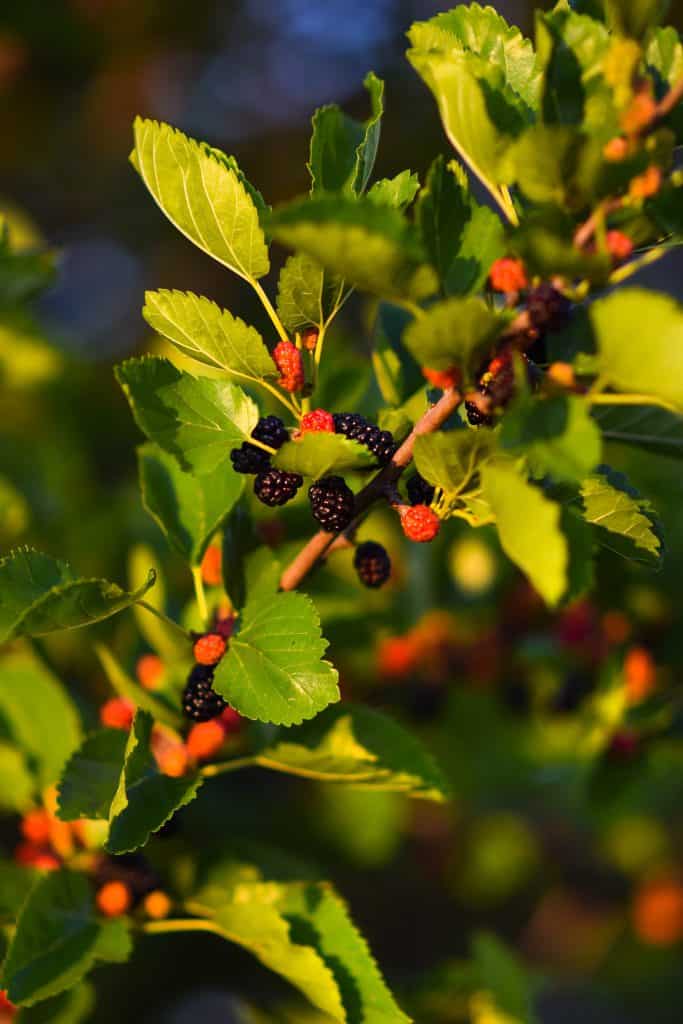
Cardinals love sweet berries and mulberry trees provide hoards of them!
These densely bushy trees also serve as safe havens for the birds when predators are near.
The Morus rubra cultivar is the only mulberry tree native to North America. Native plants are always the best choice – shortly you’ll discover why.
Planting a few Mulberry trees in strategic spots throughout your yard is sure to draw in these beautiful birds.
8. Tulip Trees
(Liriodendron tulipifera L.) / Zones 4-9
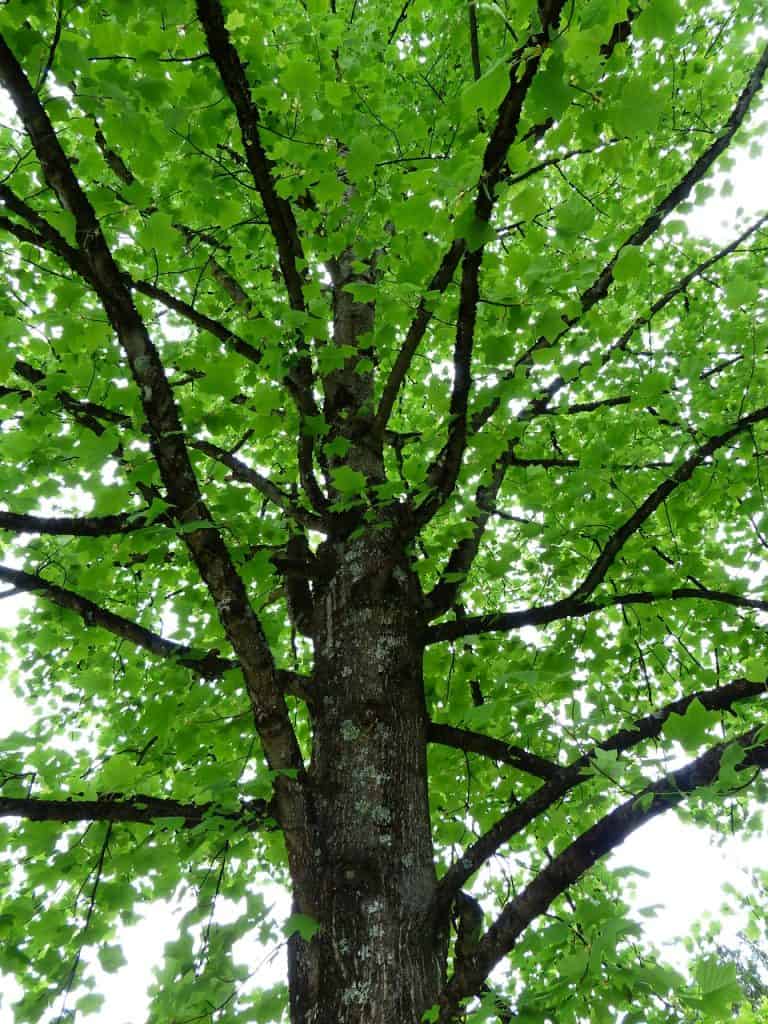
A tulip tree, named for its bright green leaves that resemble tulip flowers, is a must-have for attracting cardinals. Not only does this tree offer an abundance of food sources with its fragrant blooms and succulent fruits, but it also provides much-needed shelter.
One of the best things about planting a tulip tree is that you don’t have to wait for the fruits and blooms to see the cardinals.
Cardinals love to perch in these trees, making them great places for bird watching – even during winter when food and shelter can be scarce!
The tulip tree’s vibrant colors also add beauty to your yard all year long.
Shrubs: The Perfect Plants to Attract Cardinals
Shrubs provide the ideal nesting locations – especially the ones that are thick and dense. Some varieties offer a two-for-one, providing the perfect nesting site as well as producing berries for food.
9. Serviceberry
(Amelanchier laevis) / Zones 4-9
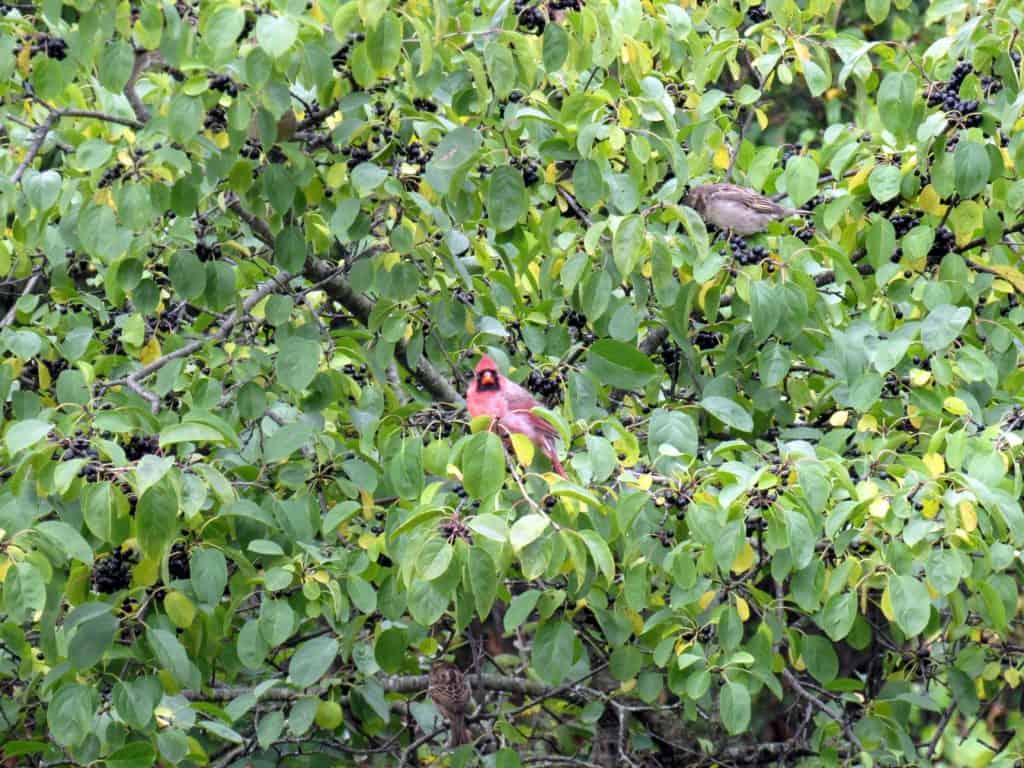
If you only plant one shrub, make it a serviceberry. Cardinals cannot resist them and you’ll enjoy the white spring blooms.
Serviceberry is known for its thick branching which is a perfect location for a mama cardinal to hide her nest.
Combine that with the ample amount of berries it produces in summer, you’ve got the perfect plant for wildlife – especially northern cardinals.
10. American Holly
(Ilex opaca) / Zones 5-9
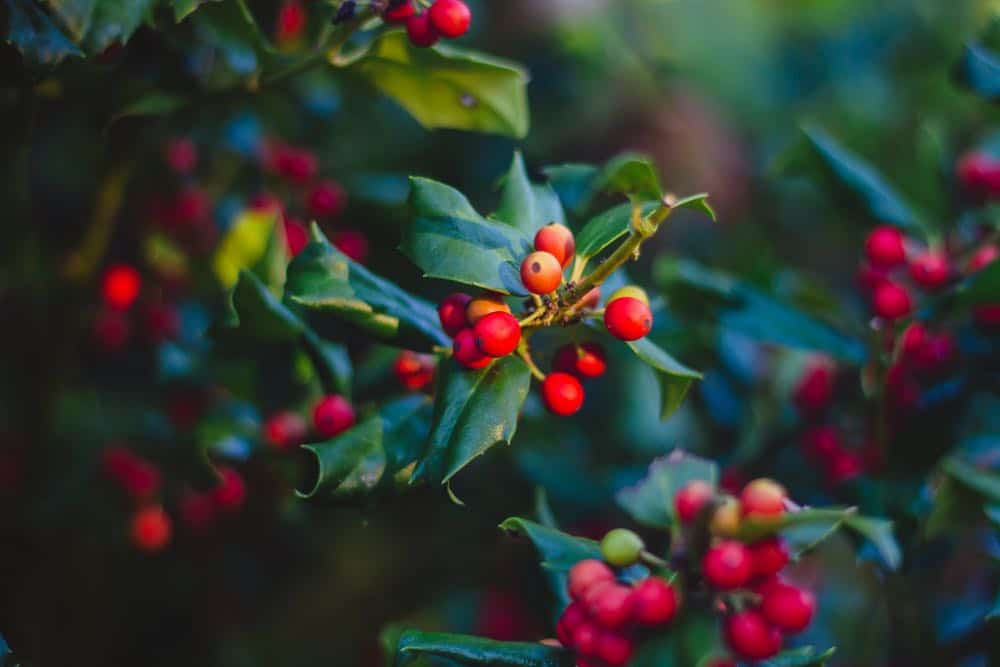
American holly is another ideal shrub to attract northern cardinals to your backyard.
This native evergreen/ornamental species produces small, bright red berries that provide a vital source of food for these birds.
American holly has the added benefit of being low-maintenance and can grow up to 15-20 feet in moist, well-drained soil.
With its lush foliage and vibrant berries, the American holly is sure to bring a splash of color and life to any outdoor space – especially in winter.
By planting this species, you will be providing cardinals with an important source of sustenance while also adding beauty to your garden or yard.
11. Dogwood
(Cornus spp.) / Zones 3-8
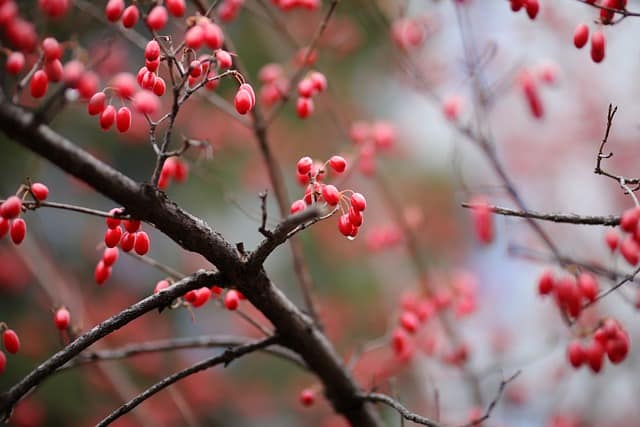
Dogwood shrubs bloom flowers and grow summer berries that are particularly appealing to northern cardinals.
I personally love the red-twigged dogwood which offers a beautiful contrast against a backdrop of snow and provides berries the birds rely on during this cold season.
These ornamental trees are also easy to grow, grow fast, and easy to care for.
12. American Beautyberry
(Callicarpa americana) / Zones 7-11
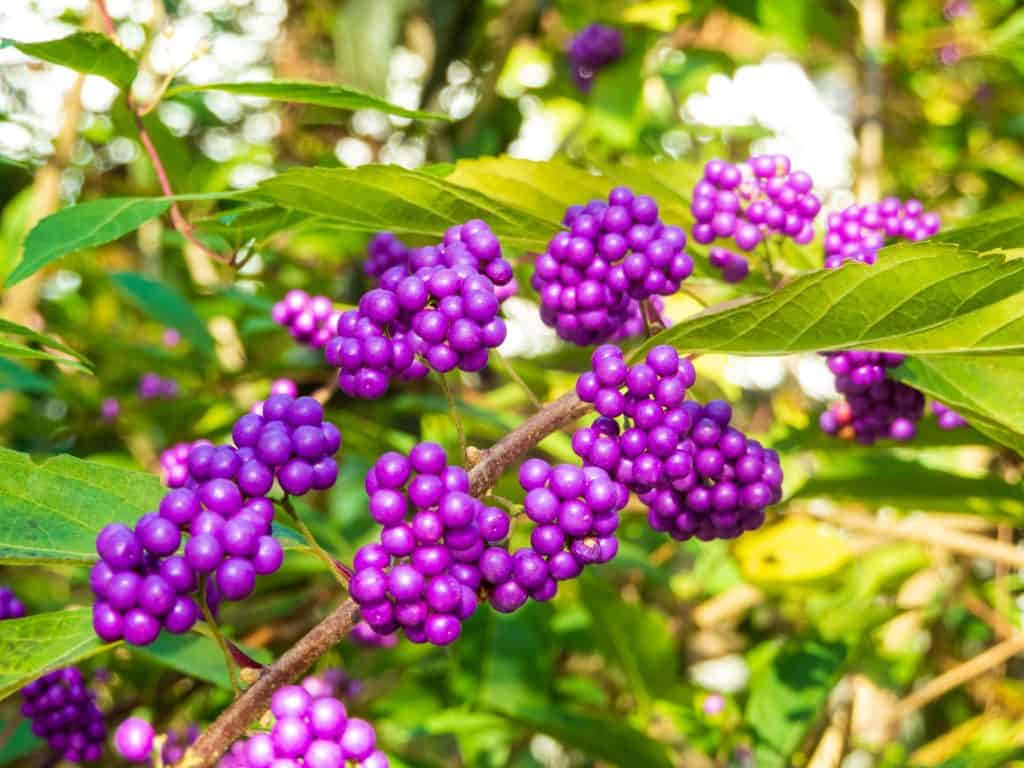
Look no further than the American Beautyberry to entice cardinals closer!
Not only does this plant offer an abundance of food sources with its succulent purple berries, but it also provides a dense environment for nesting.
And it’s gorgeous!
The American Beautyberry is native to North America and thrives in full sun or partial shade.
13. Rambling Rose
(Rosa) / Zones 5-10
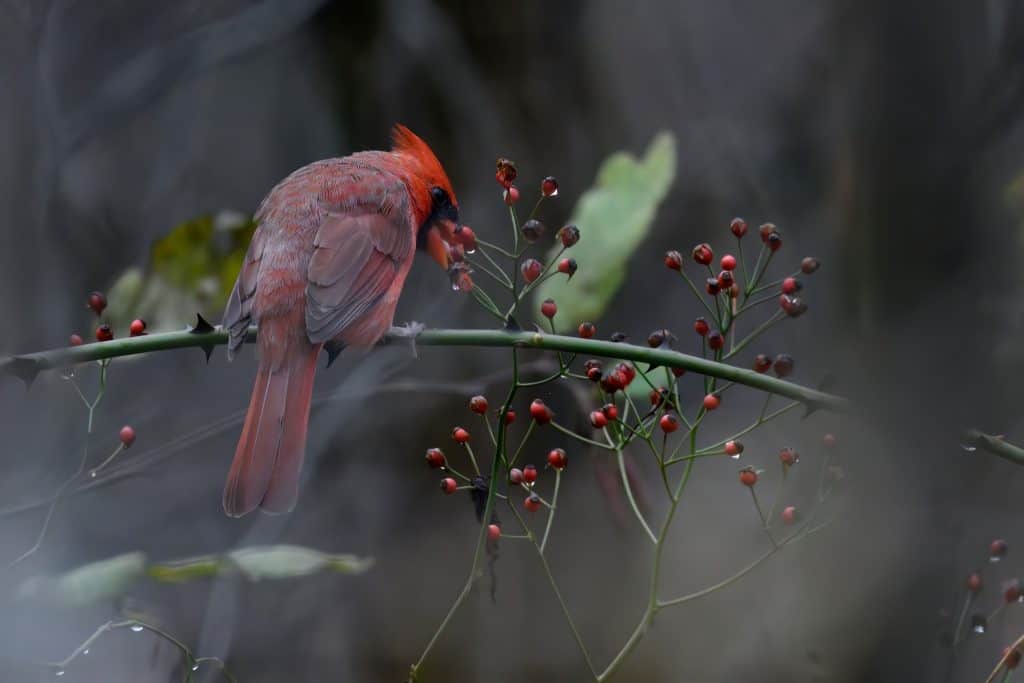
Although not a native plant, there’s no denying cardinals love rambling rose bushes!
This plant is sure to attract cardinals looking for a snack and you benefit from observing the cardinal and enjoying the abundance of roses when they’re in bloom.
14. Elderberry
(Sambucus canadensis) / Zones 3-8
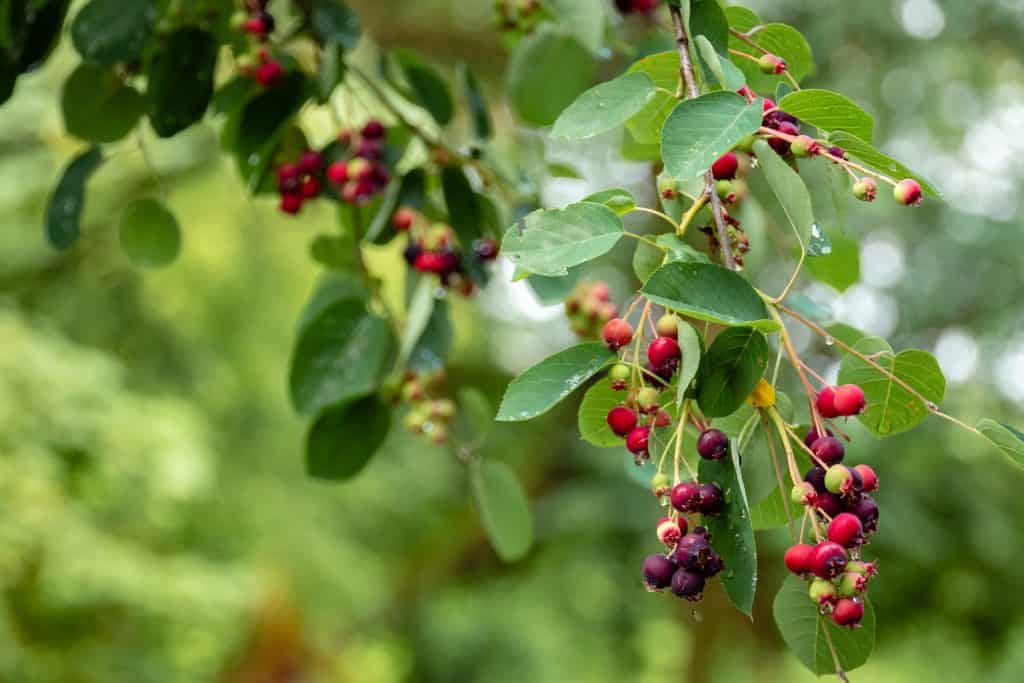
Elderberry shrubs provide a great source of food for these birds, but also have beautiful blooms that add a splash of white color to your yard.
Look for the Sambucus nigra subspecies canadensis, species that are native to North America.
This plant is incredibly easy to grow and maintain and can thrive in almost any kind of soil with minimal effort.
It can also reach heights of up to 10 feet, so it’s perfect for creating a hidden spot for the cardinals to take refuge in or to nest in.
15. Blackberry
(Rubus fruticosus) / Zones 5-8
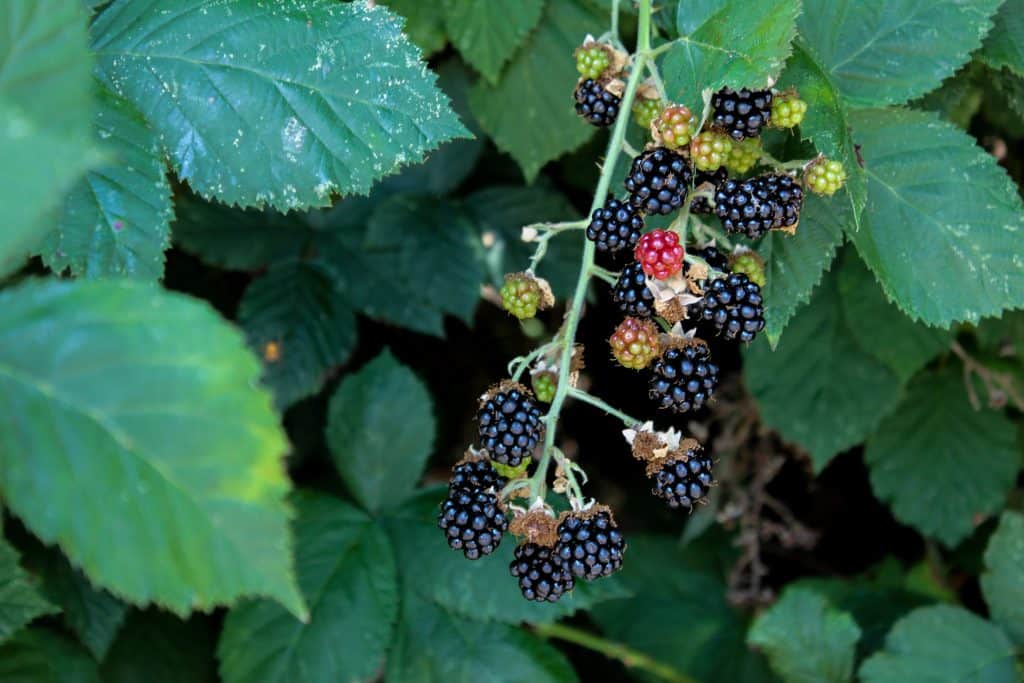
Blackberry bushes provide lush and abundant fruit for cardinals, but they are also a perfect spot for them to perch, hide from predators, and build nests.
This plant is easy to care for and requires minimal pruning – making them ideal for a low-maintenance yard.
Maybe the birds will even leave you some berries for dessert!
16. Sumac
(Rhus spp) / Zones 2-9
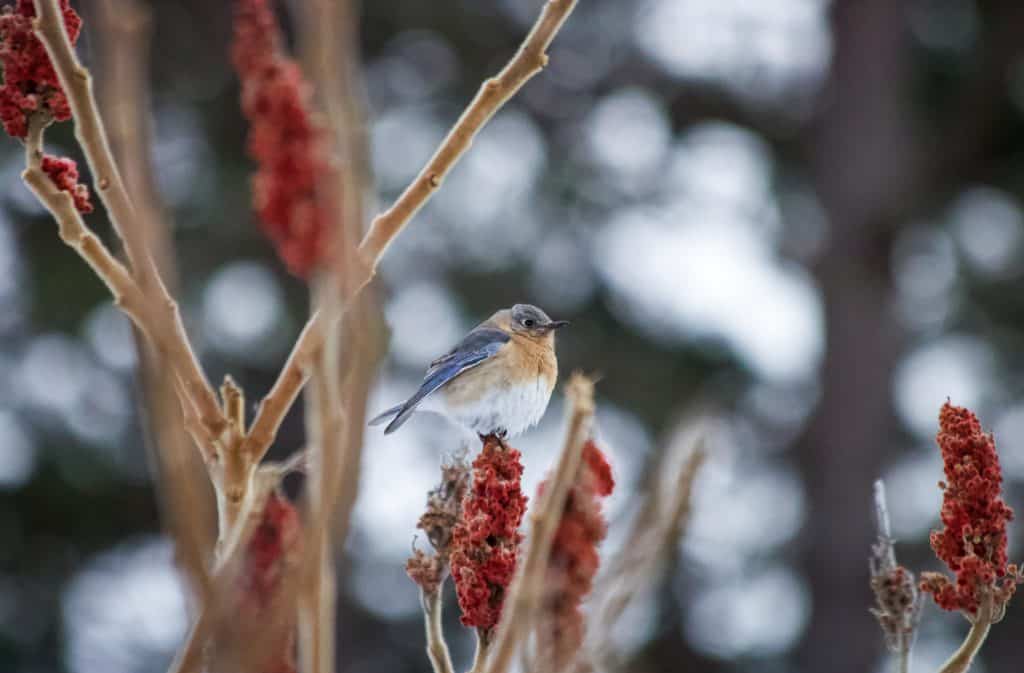
Sumac supplies an abundance of succulent fruits, but it also adds a beautiful and vibrant touch to your landscape.
Its bright, deep red leaves are sure to draw in cardinals (and eastern bluebirds!) from far and wide, while its dense foliage provides ample shelter from predators.
Plus, sumac is an incredibly hardy plant and requires minimal maintenance.
Flowers: Excellent Plants to Attract Cardinals
Nothing brightens up a landscape quite like flowers. And the best part is that when you choose the right blooms, you can also attract cardinals to your yard! Here are a few proven to attract cardinals:
17. Sunflowers
(Helianthus annuus) / Zones 2-9
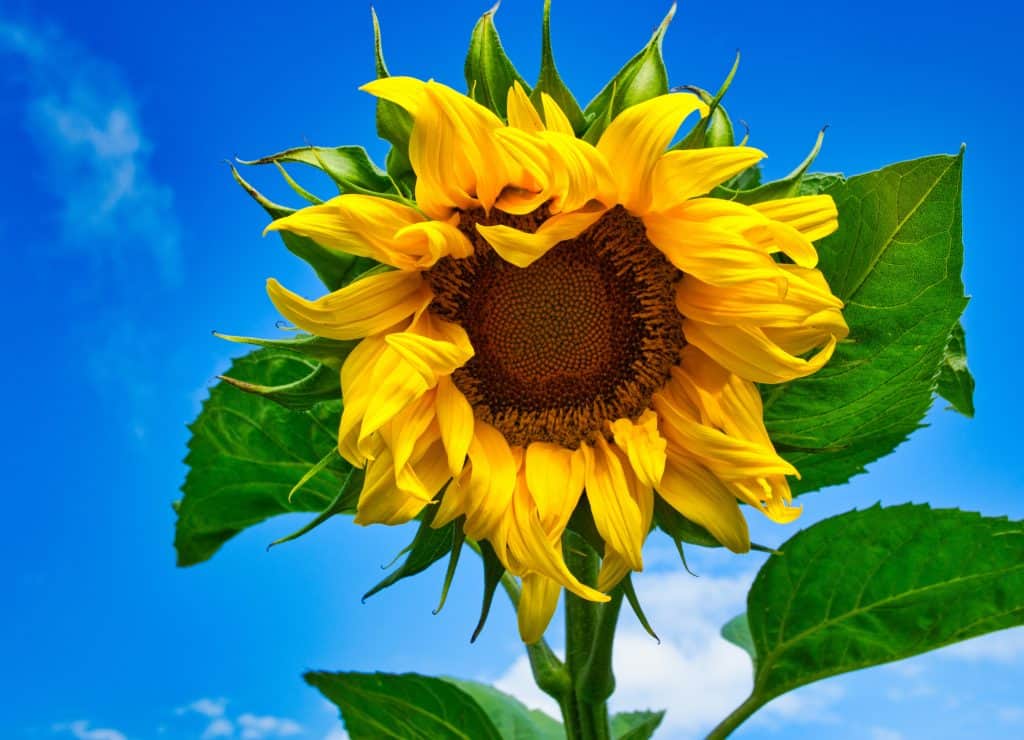
Bright and cheerful sunflower blooms are guaranteed to lure in the cardinals with their abundance of striped seeds.
And, since the cardinal’s beak is perfectly suited for the giant seed this plant produces, they’ll be first in line.
Sunflowers are relatively easy to grow and require little maintenance. Literally, take one out of your bird feeder and insert it into the soil. It’s that easy.
What about black-oil sunflower seeds? They’re another great option. In fact, all birds love black-oil sunflower seeds. Even the ones you may want to repel. That’s why I recommend the common striped sunflower (Helianthus annuus) – at least to get started.
18. Purple Coneflowers
(Echinacea purpurea) / Zones 3-9
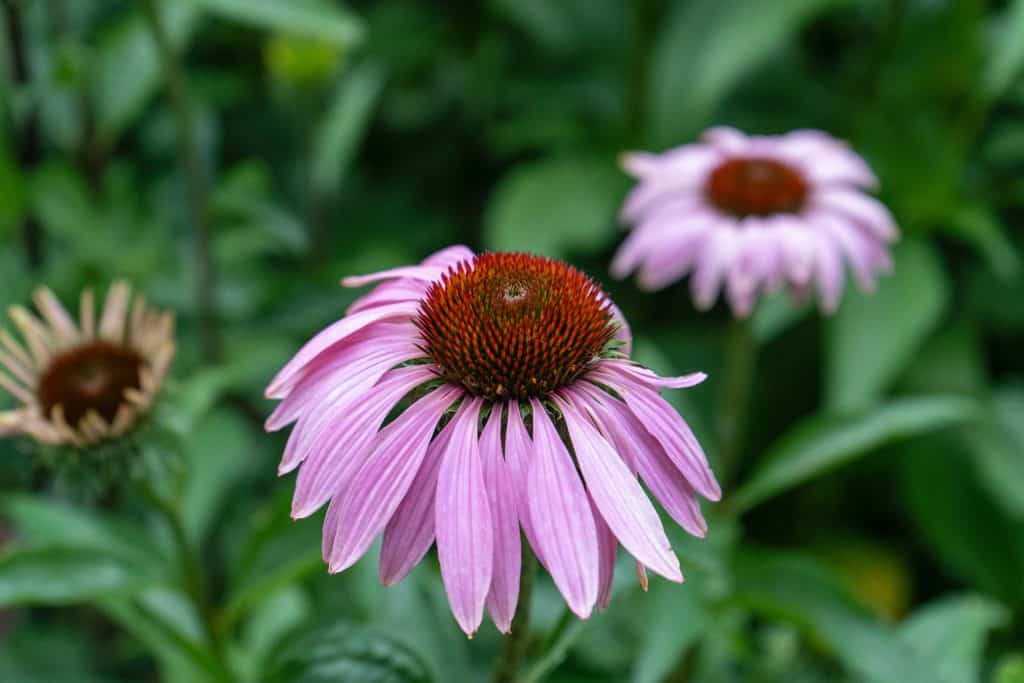
Coneflowers offer a unique burst of color that is sure to draw in northern cardinals and finches.
This plant comes in shades of pink, red, orange, yellow, and white, making them the perfect addition to a garden full of greenery.
Coneflowers flowers also provide a great source of nourishment for the birds, making them the perfect choice for anyone looking to attract cardinals.
19. Verbena
(Verbena spp.) / Zones 8-11
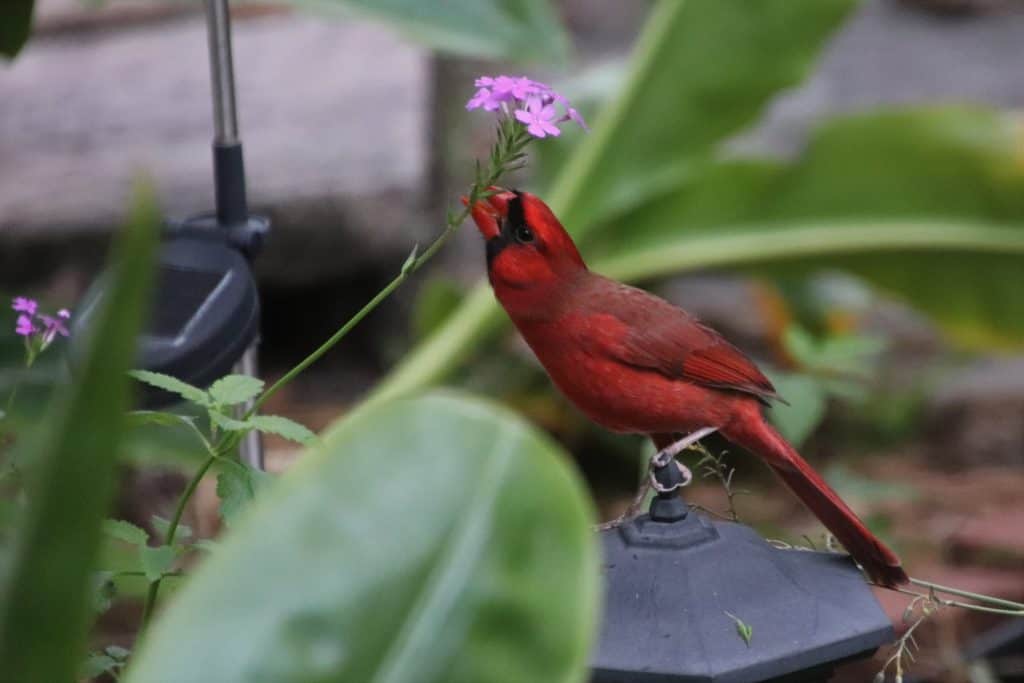
Verbena is a great choice for those wanting to attract cardinals with its bright colors and fragrant blooms. They come in shades of red, pink, apricot, lavender, purple, blue, white, and bicolor.
These flowers also produce small seeds and flower buds that northern cardinals love!
They come in annual or perennial varieties and are easy to grow. What’s not to like?
Best Vines to Attract Cardinals
20. Wild Grapevine
(Vitis spp.) / Zones 3-10
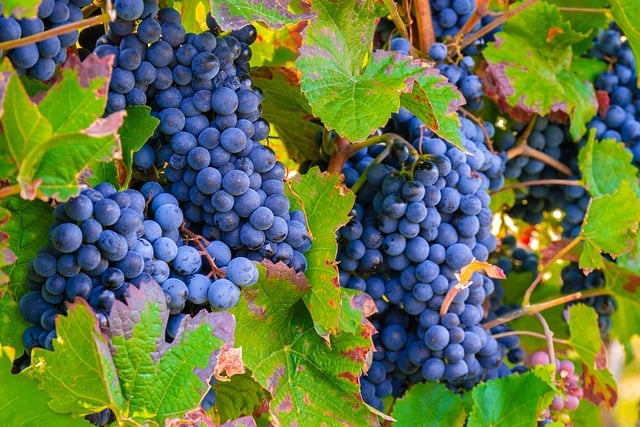
Wild grapevines are a favorite among cardinals, as it provides them with an abundance of juicy, sweet fruits that they can enjoy all summer long.
The wild grape and its windy branches and leaves also offer the ideal nesting site.
Be sure to choose a variety native to the eastern U.S. such as the Fox grape (V. labrusca).
This plant will add a splash of color to any garden, with its vibrant green foliage and clusters of purple fruit that can be seen in late summer.
21. Virginia Creepers
(Parthenocissus quinquefolia) / Zone 3-10
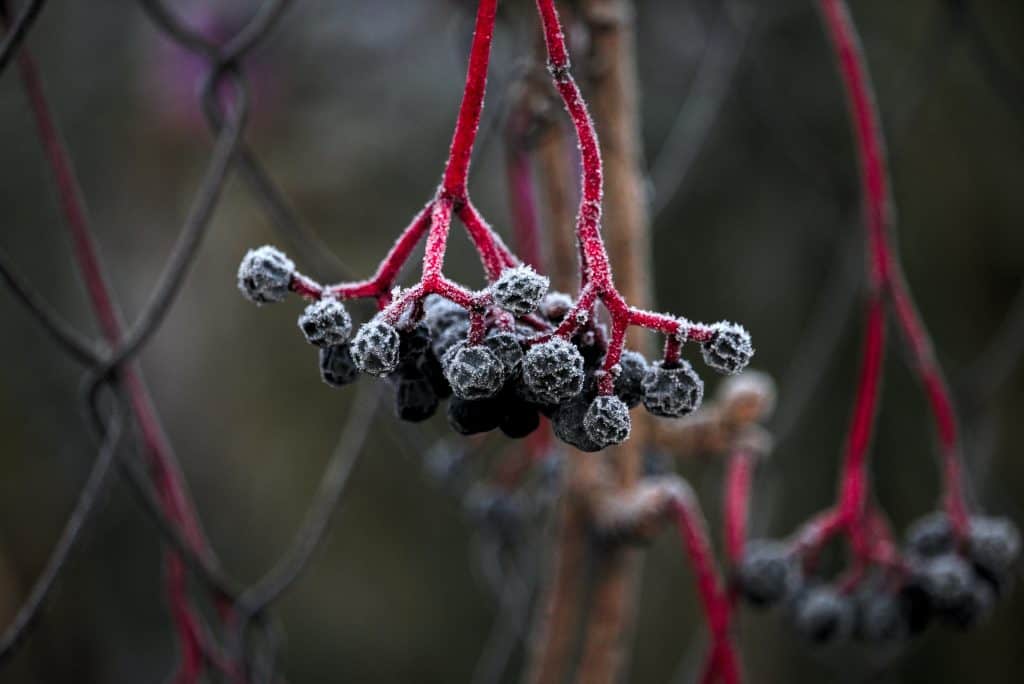
Virginia Creepers vines are easy to grow and maintain, but they also provide a great source of food for cardinals and other birds.
Their bright red berries are irresistible and the plant’s foliage supplies a perfect spot for cardinals to nest in or take refuge.
Planting Tips to Attract Cardinals
Native Plants are the Best
Native plants are the best choice for creating a garden that will attract cardinals. Here are at least 4 good reasons why:
- Native plants provide a natural habitat that is already well-adapted to the local climate so they’re easier for you to grow and are more likely to thrive. They also have built-in defense mechanisms against pests.
- Native plants create a biodiversity-rich environment giving cardinals more options when it comes to finding food and cover.
- Native plants offer more opportunities to bring in insects for the birds don’t have to venture far from their nest when hunting for baby food.
- Native plants provide cardinals with everything they need to thrive and you’ll be able to enjoy their presence more often.
Plant in Layers
When it comes to attracting cardinals, planting in layers is key. Planting a variety of heights and species creates an inviting habitat where these birds will feel safe and secure.
By providing them with a range of perches, nesting spots, food sources, and shelter, you can ensure that they will keep coming back to your yard.
Layering plants also help create an aesthetically pleasing landscape, as it provides a variety of textures and colors.
Bird Feeder Placement
Backyard birds are often targets when feeding at the bird feeders. Planting shrubs within a few feet of the cardinal feeders allows them to take cover fast if they need to. It also allows them to hide out and assess the safety of the area before venturing to the feeder.
Things to Avoid
Chemicals
Avoid the use of chemicals and unnecessary fertilizers. Go organic if you can.
Chemicals kill insects, a crucial food source for cardinals. Growing baby cardinals are fed insects almost exclusively – so they depend on healthy ones.
Non-Native Plants
Also, avoid non-native and invasive plants if you can. While birds may enjoy the seeds and fruits these plants provide, these plants crowd out our native plants reducing our overall biodiversity.
Examples of popular non-natives include the burning bush (Euonymus alatus), butterfly bush (Buddleia davidii), Japanese barberry (Berberis thunbergii), and Cotoneaster (Cotoneaster spp.) … just to name a few.
Conclusion
Northern cardinals love trees and shrubs that provide food, protection, and shelter. By planting species such as hackberry, hawthorn, mulberry, serviceberry, American holly, dogwood, and elderberry you can create a habitat that will attract and keep cardinals in your garden.
Additionally, adding flowering plants such as sunflowers, coneflowers, verbena, and chili piquin to your landscape will give the birds an added source of food.
Make sure to plant in layers and avoid using pesticides or herbicides to ensure a healthy environment for the birds. With these tips in

